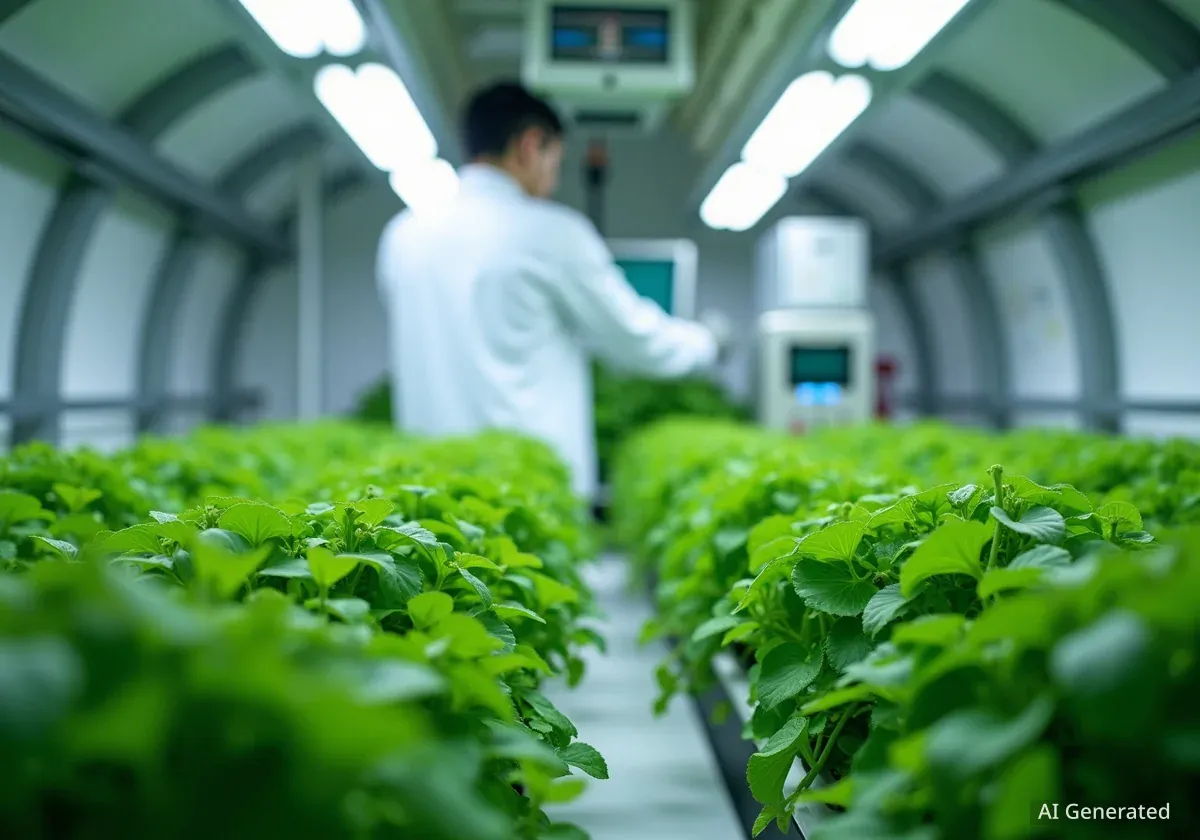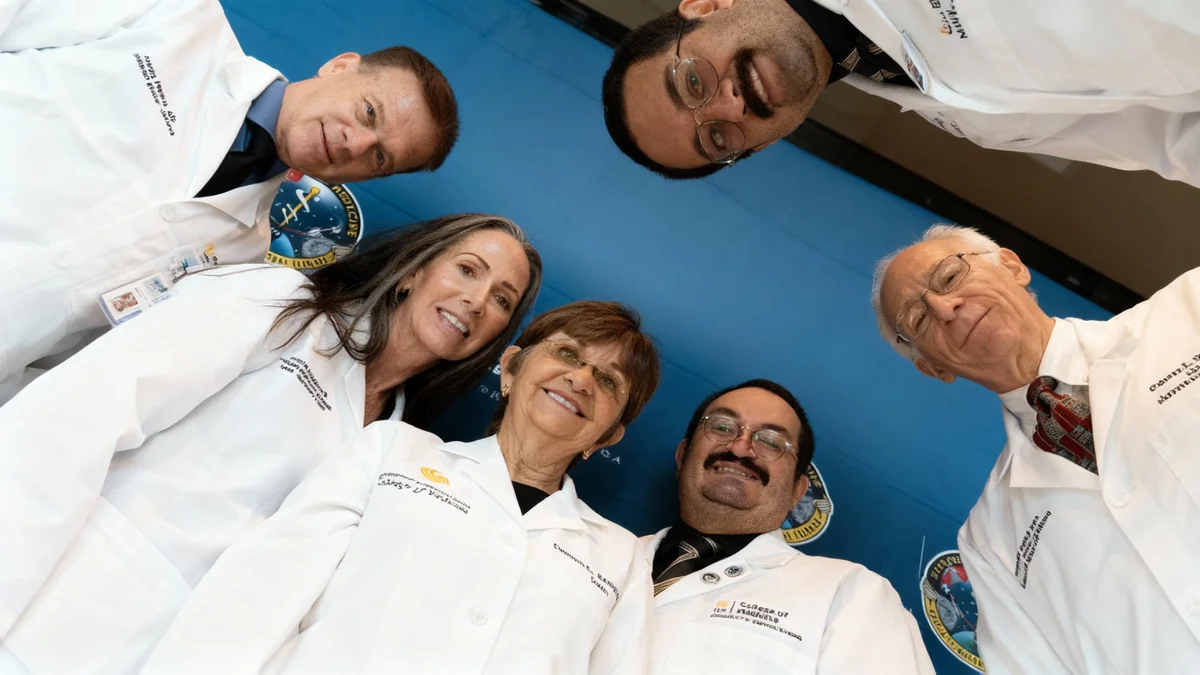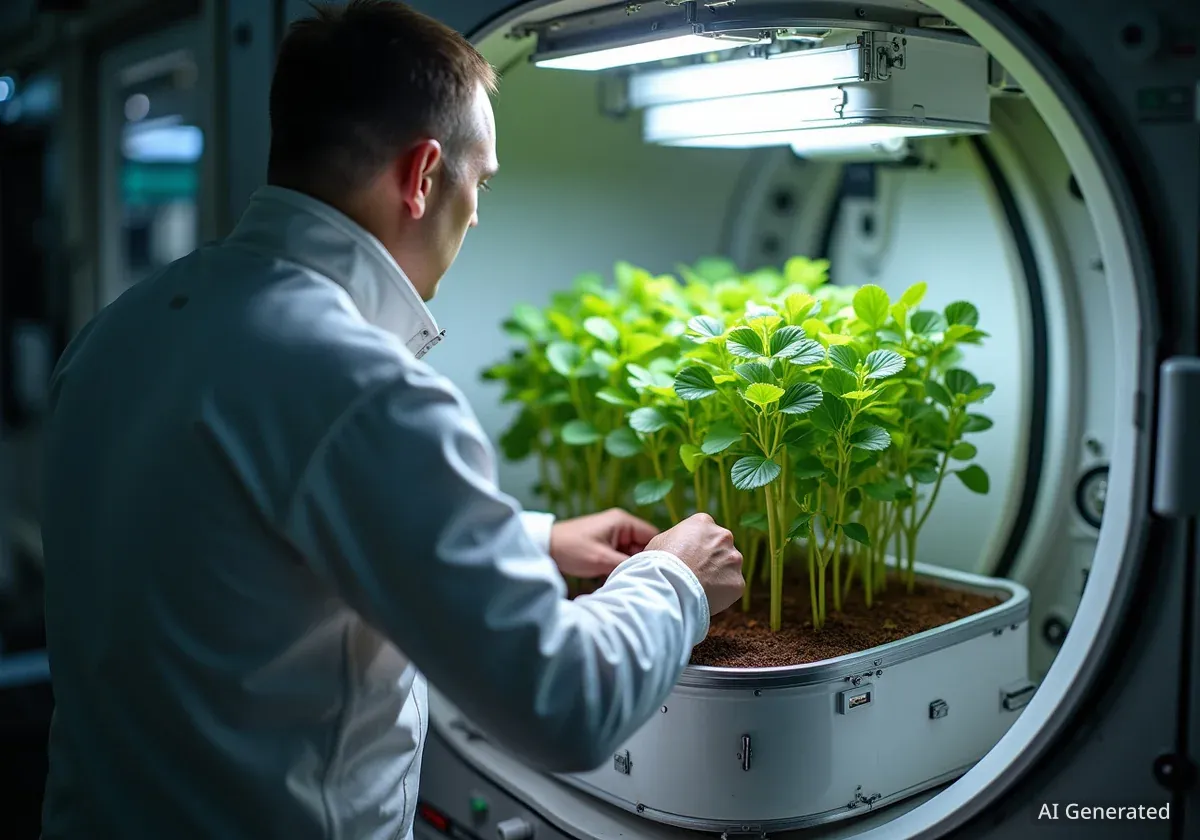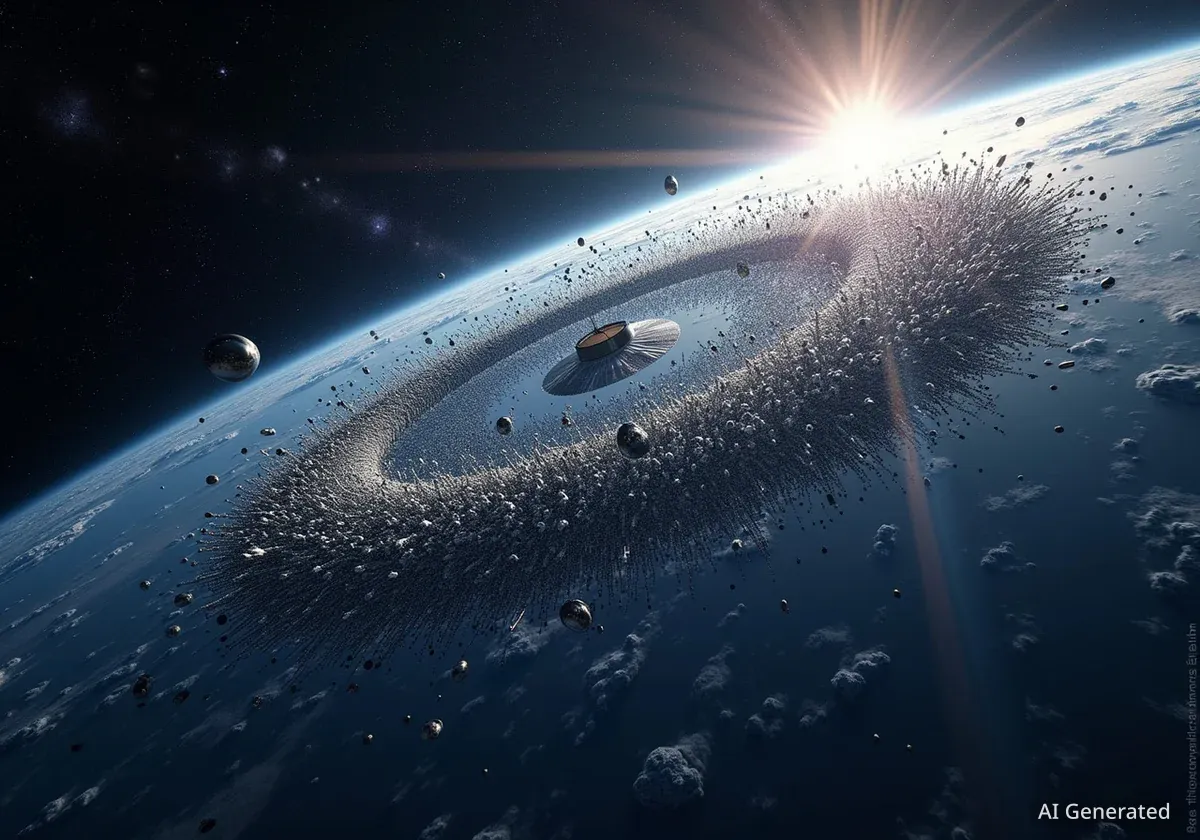In a sealed habitat at the University of Arizona's Biosphere 2, a researcher recently spent two weeks living alongside 144 dwarf pea plants. The experiment aimed to measure how effectively plants can process carbon dioxide and produce oxygen, a critical step in developing life-support systems for future long-duration space missions to the Moon and Mars.
The trial, which took place inside the Space Analog for the Moon and Mars (SAM), marks the first human-involved bioregenerative study at the facility since 1994. The data collected will help scientists calculate the precise number of plants needed to sustain human life in an enclosed off-world environment.
Key Takeaways
- A researcher lived for two weeks in a sealed habitat with 144 dwarf pea plants to test their life-support capabilities.
- The experiment measured the plants' ability to convert human-exhaled carbon dioxide into breathable oxygen.
- Data from this mission will contribute to a comprehensive database of 22 different food crops for space applications.
- This research is vital for planning long-term human missions to Mars and the Moon, aiming to reduce reliance on supplies from Earth.
A Two-Week Mission in Isolation
For 14 days, from October 13 to 27, researcher Matthias Beach lived inside the airtight SAM habitat, simulating the conditions of an astronaut on a deep-space mission. His only companions were trays of carefully cultivated dwarf pea plants. The mission was structured in two distinct phases to gather precise data.
During the first week, the plants and Beach shared the same air. As Beach exhaled carbon dioxide, the plants absorbed it through photosynthesis, converting it into oxygen. Continuous sensor readings tracked the changes in the habitat's atmosphere, providing a live look at this symbiotic relationship.
On the eighth day, the mission's focus shifted. The pea plants were harvested and removed from the habitat through an airlock. For the second week, Beach remained inside alone. This phase served as a scientific control, allowing researchers to measure the rate at which carbon dioxide levels would rise without the plants to process it.
A Historic Return to Bioregenerative Research
This experiment is a significant milestone for Biosphere 2, reviving human-centric bioregenerative life-support studies that were a hallmark of its early missions in the 1990s. The current research leverages modern sensor technology to achieve a level of precision that was previously unattainable, providing granular data on plant-human atmospheric exchange.
The Importance of Dwarf Peas
The choice of dwarf pea plants was strategic. For space missions where every inch of volume is critical, compact and efficient crops are essential. Dwarf peas offer several advantages for future astronauts.
"You only have so many inches between the hydroponic racks," explained Kai Staats, research director for SAM. "A full pea plant would be almost two meters tall. So, you're going to want a dwarf pea plant that produces a similar amount of fruit and similar amount of oxygen that doesn't take up as much space. Dwarf varieties are always preferred."
More Than Just Oxygen
Beyond air purification, these plants are a source of high-protein, nutritious food. Their ability to produce a high yield in a small footprint makes them an ideal candidate for cultivation in cramped spacecraft or planetary habitats. Furthermore, the system is designed to be self-sustaining; a portion of the seeds from each harvest can be used to grow the next crop, reducing the need for costly resupply missions from Earth.
The plants were grown in advanced hydroponic racks that automate the delivery of water, light, and nutrients. This controlled environment ensures stable growth parameters and allows for precise measurement of the plants' metabolic processes.
Building a Database for Off-World Survival
The data from this two-week mission is just the first step in a much larger project. Staats and his team are building an open-source scientific database that will eventually catalogue the performance of 22 different food crops in closed-loop systems.
The list includes staple crops vital for human nutrition:
- Peas
- Wheat
- Rice and Barley
- Lettuce and Cabbage
- Spinach
- Sweet potatoes and White potatoes
"Our goal is to build a rich, detailed database that space-faring entities, whether it's NASA, SpaceX, Blue Origin or others, can use to determine exactly how many square meters of each crop are needed to keep humans alive," Staats said.
This resource will be invaluable for mission planners, providing the fundamental calculations needed to design reliable, plant-based life-support systems. It moves the concept of space farming from theory to practical application.
The Path to Mars
For participants like Matthias Beach, the research is more than academic. It's a tangible contribution to humanity's future in space. He emphasized the urgency and reality of the work being done.
"We need places like this to do the science that will help us survive off world," Beach stated. "Some people might think we're decades away from that, but we're not. In the next 30 to 40 years, someone is going to Mars – it's inevitable. This is real science, and I'm so proud to be part of it."
As researchers begin analyzing the data from the SAM habitat, they are piecing together a blueprint for survival beyond Earth. The quiet work of 144 pea plants in an Arizona desert facility could one day be the reason humans can take a deep breath on the surface of Mars.





